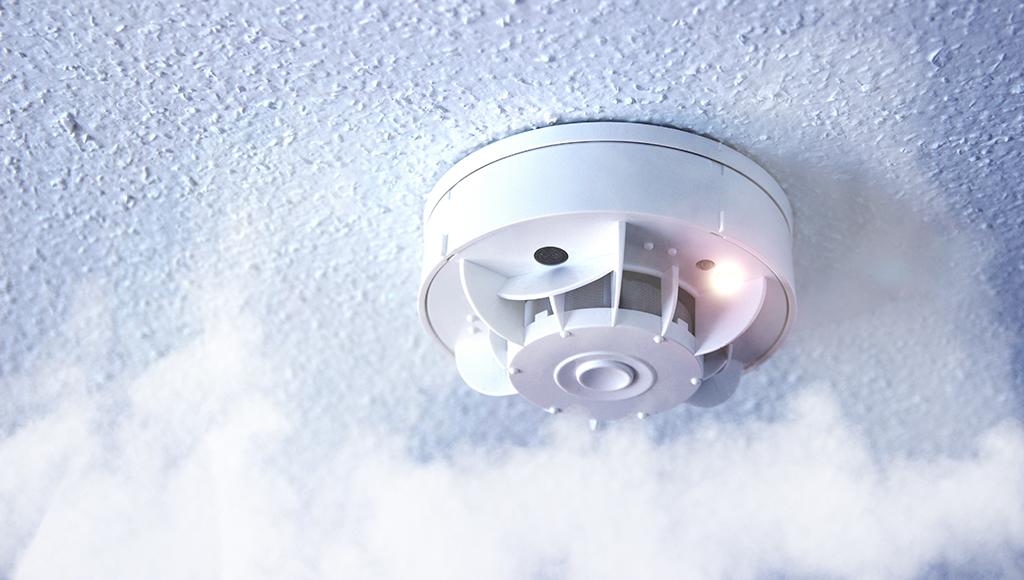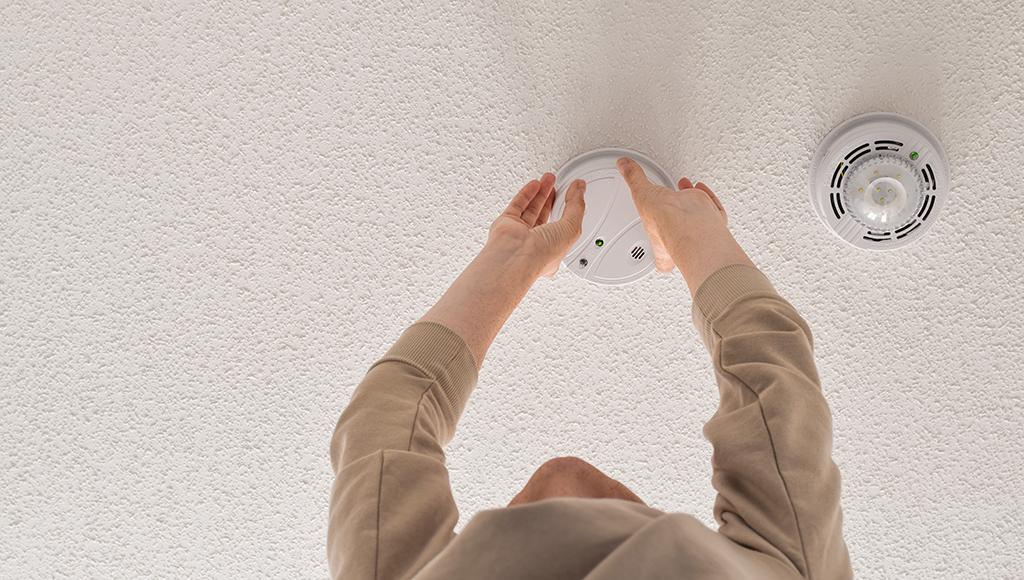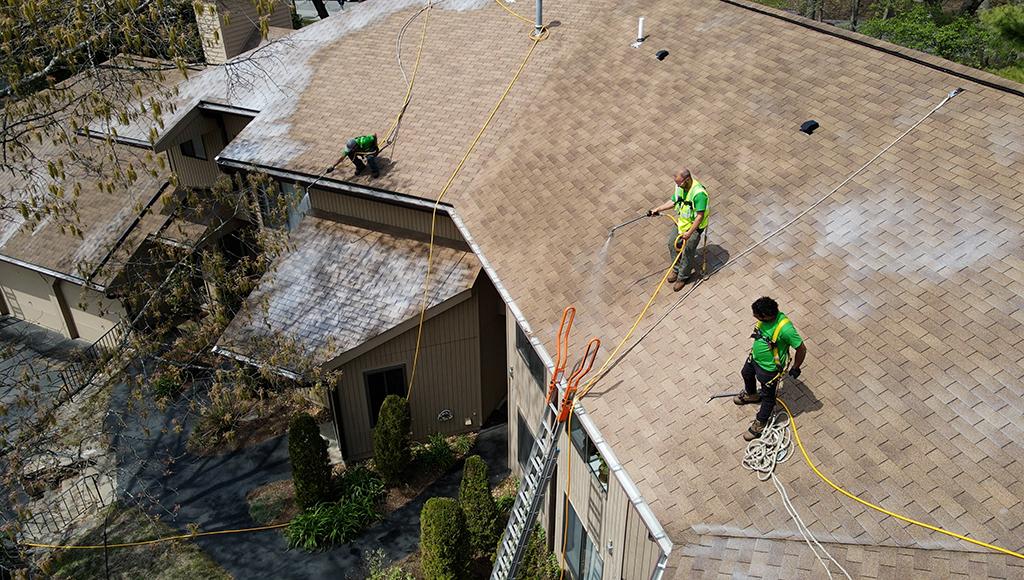Smoke alarms save countless people from house fires every year, but sometimes they seem to chirp for no apparent reason. This is your smoke detector’s way of telling you that something needs attention—either within the environment or the unit itself.
Addressing the issue promptly is essential for your safety. Even if there is no imminent danger, you’ll want to know what’s going on in case your alarm needs service to keep functioning properly and protect you from future risks.
Below, we’ll walk you through why this happens and show you how to troubleshoot your detector so you can be confident that it’s working. We’ll also share some tips about how roof maintenance can help prevent electrical fires at home and how to keep your asphalt shingles in good condition with Roof Maxx.

A low battery is the most common cause of a chirping alarm. Most modern alarms will chirp steadily once every 30 to 60 seconds when the battery is weak.
If the batteries aren’t seated correctly or are misaligned even slightly, the alarm won’t have stable access to power. It may chirp like the battery is low, or activate randomly without cause.
Smoke alarms are extremely sensitive. If enough dust builds up inside the sensors, the unit may misinterpret it as smoke or fire—and it will beep persistently just as if there really was a crisis.
Hardwired alarms are very reliable, but an interruption in power or a tripped breaker will cause them to chirp intermittently. This is intended to give you notice and make you aware that the backup battery is in use.
Most smoke alarms have a lifespan of around 7 to 10 years, but they can sometimes fail even earlier if they’re exposed to nicotine, grease, or dust. Chirping will often persist despite troubleshooting efforts.

You’ll find everything you need to choose and install a new alarm in the next few sections. As always, be sure to follow the manufacturer’s instructions carefully—improper installation can jeopardize your safety.
A low battery is the most common cause of a chirping alarm. Most modern alarms will chirp steadily once every 30 to 60 seconds when the battery is weak.
According to the National Fire Protection Association (NFPA), nearly all smoke alarms have ionization and/or photoelectric sensors. Some newer products may also come with carbon monoxide detectors, heat sensors, or smart features like Wi-Fi monitoring.
Compare the options in the table below to understand how each type of alarm works and the individual pros and cons. Whatever you decide to go with, remember that the right detector for your home will always be the one that provides the most comprehensive protection.
| Alarm Type | Detection Method | Pros | Cons |
|---|---|---|---|
| Ionization | Ionizes the air to detect fast-moving fire particles. | May respond faster to fires than photoelectric. Very affordable. | More prone to false alarms from cooking or steam. |
| Photoelectric | Sends out a beam of light to detect smoke particles. | Better at detecting smoldering fires and fewer false alarms. Affordable. | Slightly slower response to fires. |
| Dual-Sensor | Combines ionization and photoelectric sensors. | Comprehensive coverage for slow and fast-burning fires. | Slightly more expensive. |
| Smoke/CO Combination | Detects both smoke and carbon monoxide. | Offers robust protection against both fire and CO poisoning. | More expensive and requires proper placement in the home. |
| Smart Alarms | Includes both sensor types plus Wi-Fi. | Can be integrated with smart home systems or monitored via app. | More expensive and somewhat complicated to set up and use. |
You have your new smoke alarm in place. Now, it’s time to schedule a little regular maintenance to ensure it stays in good working condition over the years to come.
Change the batteries in your smoke alarm every six months, even if they aren’t chirping yet. To make this chore easier to remember, schedule it for when you change your clocks for daylight saving time.
Press the test button once a month to confirm the alarm is still working. It’s relatively rare for them to fail without notice, but that’s one lesson you don’t want to learn when it’s already too late.
Lightly clean each alarm in your home at least twice a year to prevent dust buildup and maintain clear sensors. If it’s easier, you can also make this a part of your regular household chore cycle—cleaning it more often won’t harm anything, and it only takes a few seconds!

Your roof plays a far more important role in fire safety than you might think. The shingles on a well-maintained asphalt roof are designed to expand and contract in response to the weather, which helps channel water away before it can seep into your walls and start electrical fires.
Roof Maxx helps extend their lifespan by re-infusing them with the petrochemical oils they lose over time. It’s an effective option that may buy you up to 15 more years before you need a total replacement, but it costs up to 80% less. See the treatment in action in this 1-minute video.

Never ignore your smoke alarm when it’s chirping. Even if you can’t find an obvious cause, it’s a red flag for issues like low or improperly seated batteries, dirty or dusty sensors, power issues, and other serious problems. Replacing the batteries regularly, cleaning, and testing your smoke alarm will help ensure you have the right protections in place before a fire starts.
Set reminders for yourself so you always remember to take care of your alarm. It will pay you back by standing sentinel over your home for years at a time.
If you have an asphalt shingle roof, making Roof Maxx a part of your whole-home maintenance strategy can add another layer of protection. Our all-natural, plant-based solution rejuvenates aging shingles so they can expand and contract with the weather again. Find a dealer in your area to get a free quote.
With our five-year, transferable warranty, you’ll enjoy the peace of mind that your roof and entire home are protected.